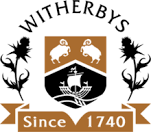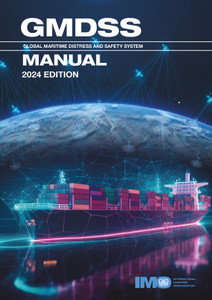
This consolidated edition combines in one guidance manual the various sources of information necessary for assessing the condition of the ballast tanks, cargo tanks and structure of tankers in service.
While the original manual mainly addressed the conventional single hull tanker, this revision includes IACS Recommendation No. 72: Confined Space Safe Practice Rev.3 Dec 2018 and IACS Unified Requirements (UR) Survey and Certification: Z10.4 Hull Surveys of Double Hull Oil Tankers (Rev.18 Feb 2023), where changes introduced in Rev.18 are to be uniformly applied by IACS Societies for surveys commenced on or after 1 July 2024. Phase-Out of Single Hull Tankers.
Since 2016, single hull tankers (SHTs) have been phased out of international trading. Since 1993, double hull structures are the mandatory standard for tanker design, as detailed in the 1996 requirements of MARPOL Annex 1, Regulation 19. Phase-Out Process.
Following a series of high profile tanker accidents and spills in the 1990s, MARPOL was amended to begin the process of a gradual phase-out of SHT, with timings based on tanker category.
Due to the impact of the sinking of the 'MV Erika', the IMO adopted an accelerated phase-out scheme, which entered into force on 1 September 2003, under the 'Regulation 13G' amendments of MARPOL Annex 1. The phase-out process was further accelerated by additional amendments that entered into force on 5 April 2005 (note that Regulation 13G is now incorporated as Regulation 20 in the revised MARPOL Annex I).
Under MARPOL, the final phasing out date for Category 1 tankers (pre-MARPOL) was 2005. The final phasing out date for Category 2 and 3 tankers (MARPOL tankers and smaller tankers) was brought forward to 2010, from 2015. In addition, a new Regulation (Regulation 21) for vessels carrying heavy grade oil (HGO) banned the carriage of HGO in SHT of 5,000 tons dwt and above after 5 April 2005, and in SHT of 600 tons dwt and above, but less than 5,000 tons dwt, by not later than 2009. Exceptions from 2010.
The 2010 date remained the phase-out date for most of the global SHT tonnage. However, four exceptions permitted the use of SHTs after 2010, which were:
1. If the vessel was engaged in cabotage trade i.e. trading locally and not internationally (the IMO extended this option to allow for some member States to achieve renewal for their domestic fleets, where the vessels were confined to operate only within the member State).
2. Theoretically, if the vessel was engaged in trade between States where neither were signatories to the MARPOL 1973/1978 Convention (although this is effectively nil, as 99.1% of world tonnage is under a Contracting State that has ratified MARPOL).
3. If the vessel was not engaged in the carriage of oil (provided that the ship was in service on 1 July 2001, fitted with only double bottoms or double sides that extend to the entire cargo tank length or double hull spaces, not meeting the technical minimum distance protection requirements and that the flag State was satisfied. Again, such continued operation cannot go beyond the date on which the ship reaches 25 years of age after the date of its delivery).
4. If the vessel operated under the Condition Assessment Scheme (CAS), as approved in IMO Resolution 94(46). However, such operation is now phased out.
Only Very Limited Numbers Remain.
The number of SHT vessels remaining in the world is, therefore, very low. Those that do remain are strictly limited in their trading and operational abilities to within the national boundaries of their member State, and to those not carrying oil cargoes (subject to the other requirements specified above). The few member states still operating SHTs, have already begun the process of full phase-out in their national legislation. Double hulled vessels are, therefore, effectively considered the universal standard for new and existing tankers in international maritime operations.
Introduction to the 2024 Consolidated Edition
Chapter One - Survey Preparation Guidelines
1.1 Survey Requirements
1.1.1 Class and Statutory Requirements
1.1.2 Owner's Requirements
1.2 Safety and Access
1.2.1 Safety During Surveys
1.2.2 Access to the Structure
1.3 Ultrasonic Thickness Determination
1.3.1 Survey Team Qualifications
1.3.2 Basic Equipment Types
1.3.3 Thickness Measurement Accuracy
1.3.4 Measurement Procedures
1.4 Technical Background for Surveys 10
1.4.1 Nomenclature
1.4.2 Structural Load Descriptions
1.4.3 Structural Defects
1.4.4 Fatigue
1.4.5 Typical Corrosion Patterns
1.4.6 Factors Influencing Corrosion
1.4.7 Corrosion Trends in Tank Spaces
1.4.8 In-Service Corrosion Rates
1.4.9 Corrosion Control Systems
Chapter Two - Survey Execution Guidelines
2.1 Introduction
2.2 General Planning Requirements
2.2.1 General
2.2.2 Data Collection and Reporting ? Databases
2.3 Structural Aspects
2.3.1 Tank Bottom Structures
2.3.2 Side Shell, Longitudinal and Transverse Bulkheads
2.3.3 Deckhead Structures
2.4 Risk Categories
2.4.1 Corrosion
2.4.2 Structural Elements
2.5 Classification Society Surveys/IACS Unified Requirements for Hull Surveys of Double Hull Oil Tankers
2.5.1 General
2.5.2 Special Survey
2.5.3 Annual Survey
2.5.4 Intermediate Survey
2.5.5 Preparation for Survey
2.6 Owner's Surveys
2.6.1 General
2.6.2 General Condition Survey
2.6.3 Detailed Condition Survey
2.6.4 Corrosion Rate Survey
2.6.5 Repair Specification Survey
Chapter Three - Survey Data Analysis Guidelines
3.1 Method of Assessment
3.1.1 Steel Condition
3.1.2 Coating Condition Assessment
3.1.3 Cathodic Protection System Assessment
3.2 Structural Integrity
3.3 Acceptance Criteria
Chapter Four - Maintenance and Repair Guidelines
4.1 General
4.2 Type of Repair
4.3 Maintenance and Repair Methods
4.3.1 Repairs of Existing Coated Areas in Segregated Ballast Tanks
4.3.2 Repairs of Uncoated Areas in Cargo Tanks
4.3.3 Pitting and Grooving Repair
4.3.4 Steel Renewal
4.3.5 Steel Reinforcement
4.3.6 Steel Design Modification
4.3.7 Repairs of Structural Defects
4.4 Optimum Maintenance and Repair Strategy
4.4.1 General
4.4.2 Short-Term Maintenance and Repair Program
4.4.3 Long-Term Maintenance and Repair Program
Bibliography
Appendix I Background to Forum Activities
Appendix II IACS Unified Requirements UR Z10.4
Appendix III IACS Rec No. 72: Confined Space Safe Practice
Appendix IV Catalogue of Structural Detail Failures
Appendix V In-Service Corrosion Rate Studies
Appendix VI Structural Inspection Guidelines
Appendix VII Assessment of Existing Surface Coating Systems
TSCF
The Tanker Structure Co-operative Forum (TSCF) is an informal technical body whose membership is voluntary and comprised of Oil Companies, Independent Owners/Operators and Classification Societies who will actively contribute to the TSCF'S Mission.
The mission of the TSCF is to advance maritime safety through improvements in the design and maintenance of tanker structures. This is achieved by sharing technical knowledge and experience in order to gain a better understanding of the safety performance of tanker structures in service. Specific topic areas of interest include corrosion, structural defects, inspection procedures, and criteria for determining renewal of damaged or corroded structure.
The TSCF is committed to sharing accumulated experience on tanker structures with the marine industry. This is achieved through prompt public release of technical manuals and information papers, and proceedings of TSCF Shipbuilder's Meetings.
http://www.tscforum.org/AboutTSCF/interim.aspx
- Number of Pages:
- 296
- Published Date:
- September 2023
- Book Height:
- 300 mm
- Book Width:
- 0 mm
- Publication Date:
- September 2023
- Author:
Tanker Structure for Co-operative Forum
- ISBN:
- 1914993620
- Weight:
- 1.8 kg
- Preview:
- Yes
 Witherbys.com
Witherbys.com





